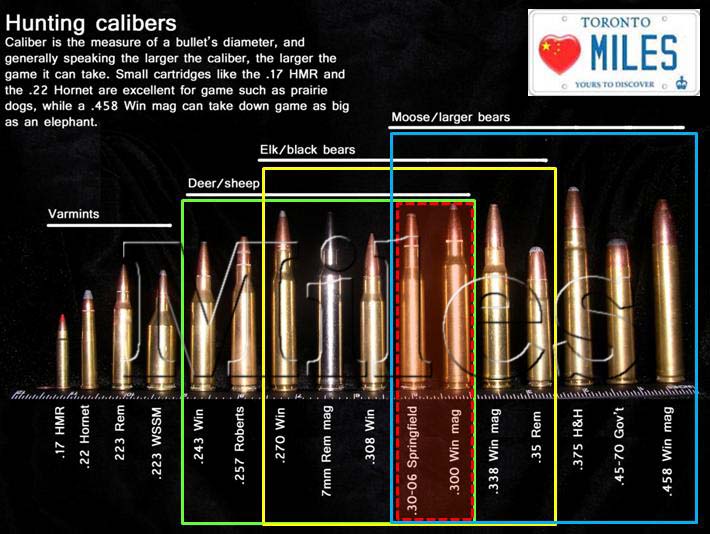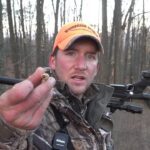Best caliber for elk and mule deer – When it comes to hunting elk and mule deer, choosing the right caliber is crucial for success. In this comprehensive guide, we’ll delve into the world of ballistics, rifle calibers, and shot placement to help you make an informed decision that will maximize your chances of a clean and ethical harvest.
We’ll explore the impact of bullet weight, velocity, and energy on elk and mule deer hunting, providing data and examples to support the effectiveness of different ammunition types. We’ll also discuss the suitability of various rifle calibers, comparing their accuracy, range, and recoil in a convenient table format.
Ammunition Performance

The effectiveness of ammunition in elk and mule deer hunting hinges on three key factors: bullet weight, velocity, and energy. These elements interplay to determine the bullet’s ability to penetrate the animal’s hide, reach vital organs, and deliver a lethal blow.
Heavier bullets carry more momentum and energy, making them more effective at penetrating thick hide and bone. However, they tend to have lower velocities, which can limit their range and trajectory. Lighter bullets, on the other hand, have higher velocities but less energy, making them more suitable for long-range shots but less effective at close range.
The ideal bullet weight for elk and mule deer hunting typically falls between 150 and 180 grains. These bullets offer a good balance of penetration and velocity, making them effective at both close and long ranges.
Velocity
Velocity plays a crucial role in determining the bullet’s trajectory and energy. Higher velocity bullets maintain their energy over longer distances, making them more effective at long-range shots. However, excessive velocity can lead to excessive meat damage and recoil.
For elk and mule deer hunting, a velocity between 2,500 and 3,000 feet per second (fps) is generally considered optimal. This velocity range provides sufficient energy for penetration while minimizing recoil and meat damage.
Energy
Energy is the measure of a bullet’s ability to do work. It is determined by the bullet’s weight and velocity. Higher energy bullets have greater penetrating power and are more effective at taking down large game animals like elk and mule deer.
The minimum recommended energy for elk and mule deer hunting is 1,500 foot-pounds (ft-lbs). However, many hunters prefer to use bullets with energy levels closer to 2,000 ft-lbs or higher to ensure reliable penetration and knockdown power.
Rifle Calibers: Best Caliber For Elk And Mule Deer

The choice of rifle caliber for elk and mule deer hunting depends on various factors, including the size of the game, the terrain, and the hunter’s personal preferences. Some of the most popular calibers for these species include the .270 Winchester, .30-06
Springfield, .308 Winchester, and .338 Winchester Magnum.
When selecting a rifle caliber for elk and mule deer hunting, it is important to consider the following factors:
- Accuracy:The accuracy of a rifle caliber is determined by its ability to consistently hit the target at a given distance. For elk and mule deer hunting, a rifle caliber that is capable of sub-MOA (minute of angle) accuracy is ideal.
- Range:The range of a rifle caliber is determined by its ability to retain enough energy to effectively kill the game at a given distance. For elk and mule deer hunting, a rifle caliber that is capable of reaching out to 500 yards or more is ideal.
- Recoil:The recoil of a rifle caliber is determined by the amount of force that is generated when the rifle is fired. For elk and mule deer hunting, a rifle caliber that has moderate recoil is ideal.
The following table compares the performance of some of the most popular rifle calibers for elk and mule deer hunting:
| Caliber | Accuracy | Range | Recoil |
|---|---|---|---|
| .270 Winchester | Sub-MOA | 500 yards | Moderate |
| .30-06 Springfield | Sub-MOA | 500 yards | Moderate |
| .308 Winchester | Sub-MOA | 400 yards | Light |
| .338 Winchester Magnum | Sub-MOA | 600 yards | Heavy |
Shot Placement

Shot placement is crucial for ethical and effective hunting. A well-placed shot can result in a quick and clean kill, while a poorly placed shot can cause unnecessary suffering for the animal.
The vital areas on elk and mule deer are similar. The heart and lungs are the most important targets, followed by the liver and spine. A shot through the heart or lungs will usually result in a quick kill. A shot through the liver or spine may not be immediately fatal, but it will eventually lead to the animal’s death.
For taking down elk and mule deer, a .300 Win Mag or a .30-06 Springfield are both excellent choices. These calibers offer plenty of power and accuracy for these large game animals. If you’re looking for a more exotic pet, fallow deer make great companions.
They’re easy to care for and have a gentle disposition. Back to the topic of hunting, the .300 Win Mag and .30-06 Springfield are both versatile calibers that can also be used for target shooting and varmint hunting.
Heart Shot
The heart is located in the chest cavity, just behind the front shoulder. It is about the size of a grapefruit and is surrounded by the lungs. A shot through the heart will usually result in a quick kill.
Lung Shot
The lungs are located on either side of the heart. They are large and spongy, and they fill most of the chest cavity. A shot through the lungs will usually result in a quick kill, but it may not be as effective as a heart shot.
Liver Shot
The liver is located on the right side of the abdomen, just behind the diaphragm. It is a large, dark organ that is responsible for filtering the blood. A shot through the liver may not be immediately fatal, but it will eventually lead to the animal’s death.
Spine Shot
The spine is located along the back of the animal. It is a series of bones that protect the spinal cord. A shot through the spine will usually result in paralysis and death.
When hunting for elk and mule deer, the choice of caliber is crucial for a clean and ethical harvest. While the .30-06 and .270 Winchester are popular options, some hunters prefer the versatility of the .308 Winchester. However, for those seeking a unique trophy, the elusive black horn deer presents a formidable challenge.
Its rarity and distinctive appearance make it a highly sought-after prize. Returning to the topic of elk and mule deer hunting, the .300 Winchester Magnum offers exceptional long-range accuracy, making it a formidable choice for these majestic animals.
Hunting Conditions

Terrain, weather, and distance significantly impact caliber selection. Consider these factors when making your choice:
Terrain:In rugged terrain, a flatter trajectory is crucial for long-range shots. Calibers like the .270 Winchester and .300 Winchester Magnum excel in these conditions.
Weather
Extreme weather conditions can affect bullet performance. In windy conditions, a heavier bullet with a higher ballistic coefficient (BC) will resist wind drift better. For example, the .300 Weatherby Magnum has a high BC and is suitable for windy environments.
Distance
The effective range of a caliber depends on its trajectory and energy retention. For shots beyond 300 yards, a caliber with a flatter trajectory and high energy retention is necessary. The .300 Winchester Magnum and .338 Winchester Magnum are popular choices for long-range hunting.
Legal Considerations
Elk and mule deer hunting regulations vary significantly across different jurisdictions, including the United States and Canada. Understanding the legal requirements for hunting these species is crucial to ensure compliance and avoid potential penalties.
Caliber Restrictions and Regulations, Best caliber for elk and mule deer
Some jurisdictions may impose specific caliber restrictions or regulations for hunting elk and mule deer. These restrictions can impact the choice of ammunition used, as certain calibers may be prohibited or have minimum energy requirements. It is essential to consult the hunting regulations of the specific jurisdiction where you plan to hunt to determine any applicable caliber restrictions.For
example, in some states, hunting elk may require a minimum caliber of .270 Winchester or 7mm Remington Magnum. This is due to the larger size and toughness of elk, which necessitates a caliber with sufficient energy to ensure a clean kill.
Conversely, hunting mule deer may allow for a wider range of calibers, as they are generally smaller and less resilient than elk.Understanding the legal requirements and caliber restrictions for hunting elk and mule deer is paramount for ethical and responsible hunting practices.
By adhering to these regulations, hunters can help ensure the conservation of these magnificent species while also upholding the principles of fair chase.
Concluding Remarks
Ultimately, the best caliber for elk and mule deer is the one that meets your specific hunting conditions, legal requirements, and personal preferences. By considering the factors discussed in this guide, you can make an informed choice that will give you the confidence to take that perfect shot.
User Queries
What are the most important factors to consider when choosing a caliber for elk and mule deer?
Bullet weight, velocity, energy, accuracy, range, recoil, and legal restrictions.
What are some of the most popular calibers for elk and mule deer hunting?
.270 Winchester, .30-06 Springfield, .308 Winchester, .300 Winchester Magnum, .338 Winchester Magnum
How does shot placement affect the effectiveness of a caliber?
Shot placement is critical for ethical and effective hunting. Aim for vital areas such as the heart, lungs, or brain.



